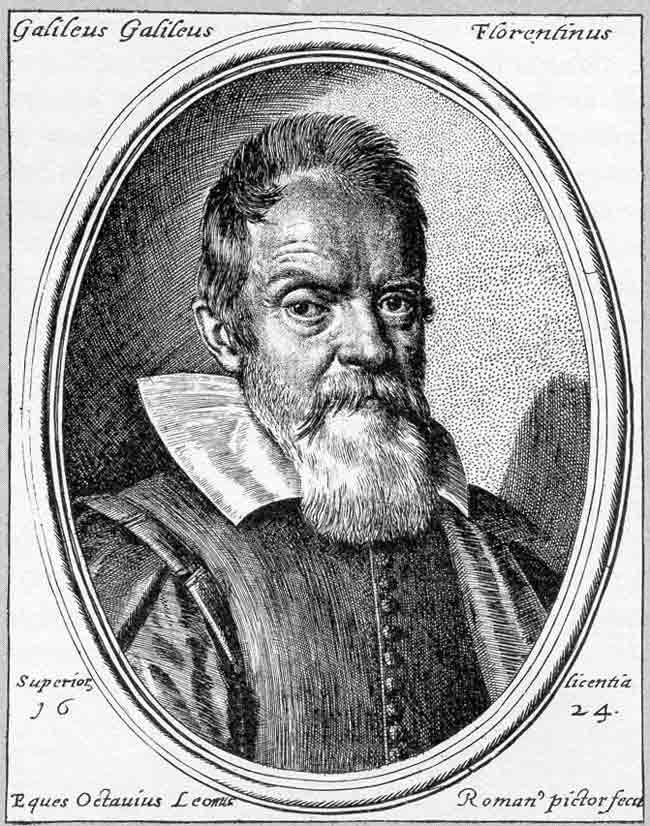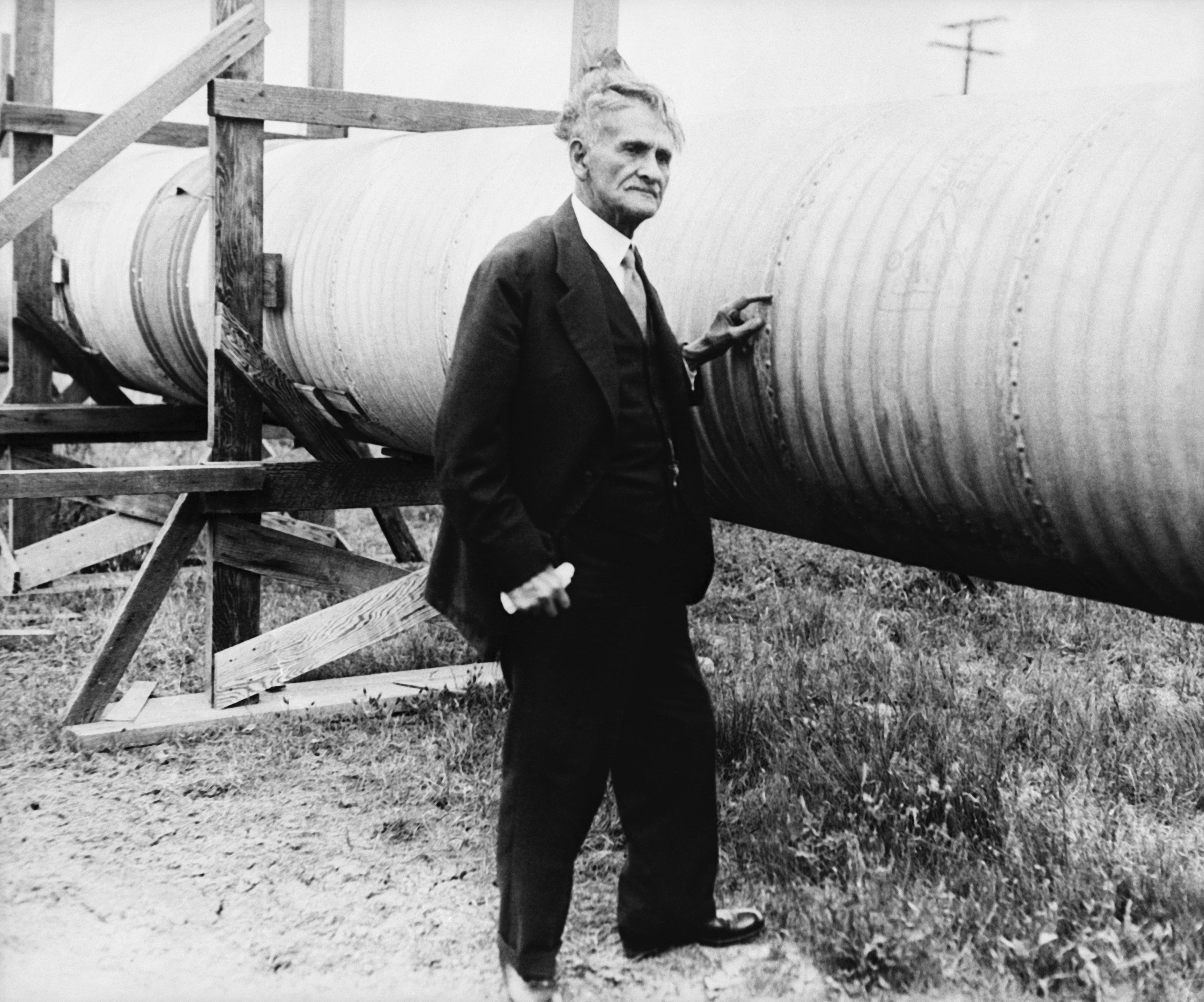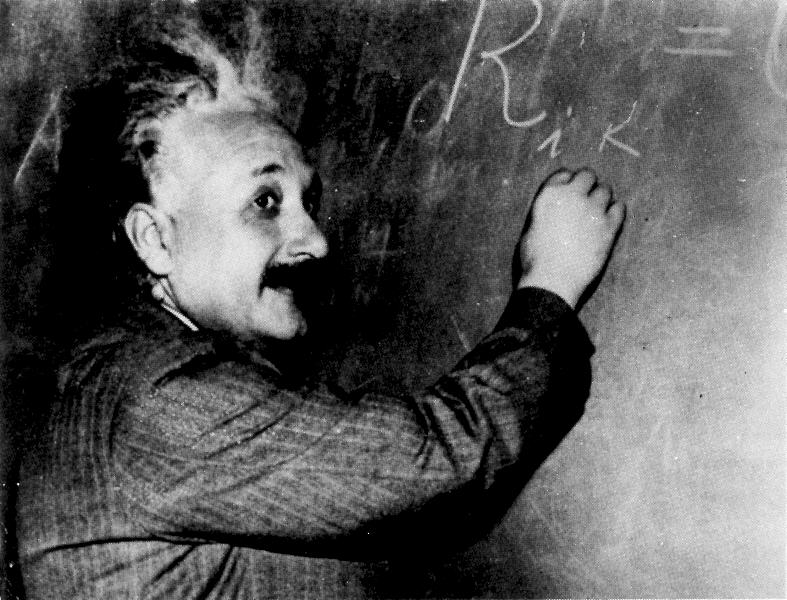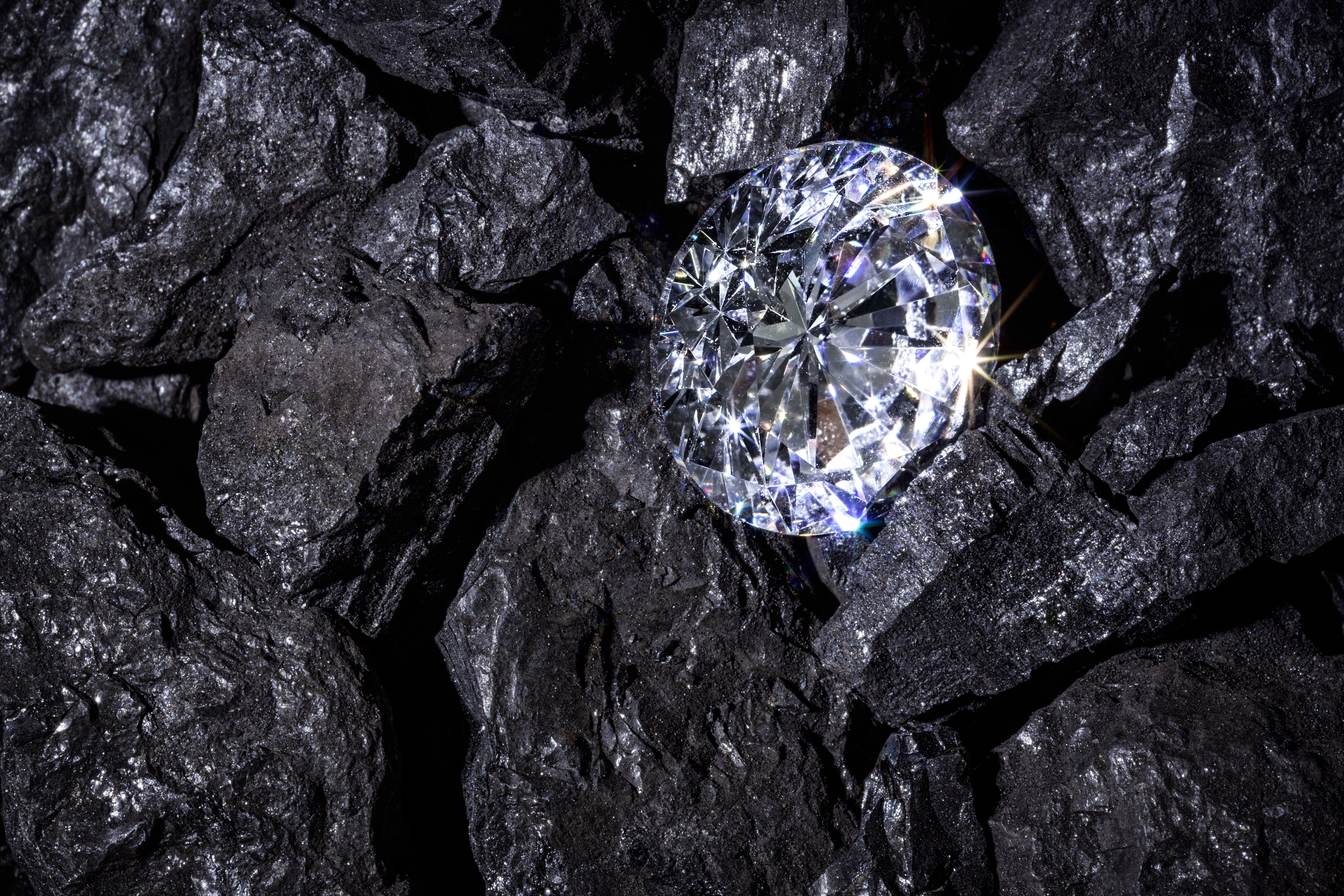How Many Times Can Light Circle the Earth in One Second
What is the speed of light?

The speed of light traveling through a vacuum is exactly 299,792,458 meters (983,571,056 anxiety) per second. That's nigh 186,282 miles per second — a universal constant known in equations every bit "c," or lite speed.
According to physicist Albert Einstein'southward theory of special relativity, on which much of modernistic physics is based, nothing in the universe can travel faster than light. The theory states that as matter approaches the speed of low-cal, the matter's mass becomes infinite. That ways the speed of lite functions as a speed limit on the whole universe. The speed of light is so immutable that, co-ordinate to the U.Southward. National Institute of Standards and Applied science, it is used to ascertain international standard measurements similar the meter (and by extension, the mile, the pes and the inch). Through some crafty equations, it also helps define the kilogram and the temperature unit Kelvin.
Only despite the speed of low-cal's reputation as a universal constant, scientists and science fiction writers alike spend fourth dimension contemplating faster-than-light travel. Then far no one's been able to demonstrate a real warp drive, simply that hasn't slowed our collective hurtle toward new stories, new inventions and new realms of physics.
Related: Special relativity holds upwards to a high-free energy test
What is a lite-year?
A l ight-year is the distance that lite can travel in ane yr — nearly half-dozen trillion miles (10 trillion kilometers). It'southward one style that astronomers and physicists mensurate immense distances beyond our universe.
Light travels from the moon to our eyes in almost 1 second, which ways the moon is about 1 light-second away. Sunlight takes virtually viii minutes to attain our optics, then the sun is nigh 8 light-minutes away. Lite from Alpha Centauri, which is the nearest star system to our own, requires roughly iv.3 years to get here, then Alpha Centauri is 4.3 light-years away.
"To obtain an idea of the size of a light-year, take the circumference of the Earth (24,900 miles), lay information technology out in a straight line, multiply the length of the line by 7.5 (the corresponding distance is i calorie-free-2d), then identify 31.vi million similar lines end to end," NASA'due south Glenn Research Heart says on its website. "The resulting altitude is almost 6 trillion (6,000,000,000,000) miles!"
Stars and other objects beyond our solar organisation lie anywhere from a few lite-years to a few billion light-years away. And everything astronomers "run across" in the distant universe is literally history. When astronomers study objects that are far away, they are seeing light that shows the objects as they existed at the time that light left them.
This principle allows astronomers to come across the universe as it looked after the Big Blindside, which took place about 13.8 billion years ago. Objects that are 10 billion low-cal-years away from the states announced to astronomers equally they looked 10 billion years agone — relatively before long subsequently the beginning of the universe — rather than how they appear today.
Related: Why the universe is all history
How did we acquire the speed of light?

As early every bit the fifth century, Greek philosophers like Empedocles and Aristotle disagreed on the nature of calorie-free speed. Empedocles proposed that lite, whatever it was fabricated of, must travel and therefore, must take a charge per unit of travel. Aristotle wrote a rebuttal of Empedocles' view in his own treatise, On Sense and the Sensible, arguing that light, dissimilar audio and olfactory property, must exist instantaneous. Aristotle was wrong, of course, simply it would take hundreds of years for anyone to prove information technology.
In the mid 1600s, the Italian astronomer Galileo Galilei stood two people on hills less than a mile autonomously. Each person held a shielded lantern. One uncovered his lantern; when the other person saw the wink, he uncovered his too. Simply Galileo'south experimental distance wasn't far enough for his participants to tape the speed of low-cal. He could only conclude that light traveled at to the lowest degree ten times faster than sound.
In the 1670s, Danish astronomer Ole Rømer tried to create a reliable timetable for sailors at bounding main, and according to NASA, accidentally came upward with a new best estimate for the speed of calorie-free. To create an astronomical clock, he recorded the precise timing of the eclipses of Jupiter's moon, Io, from Globe. Over time, Rømer observed that Io'south eclipses frequently differed from his calculations. He noticed that the eclipses appeared to lag the most when Jupiter and Earth were moving away from 1 another, showed up ahead of fourth dimension when the planets were approaching and occurred on schedule when the planets were at their closest or farthest points. This observation demonstrated what nosotros today know as the Doppler effect, the modify in frequency of light or sound emitted by a moving object that in the astronomical world manifests as the then-called redshift, the shift towards "redder", longer wavelengths in objects speeding away from u.s.a.. In a leap of intuition, Rømer determined that low-cal was taking measurable time to travel from Io to World.
Rømer used his observations to estimate the speed of calorie-free. Since the size of the solar system and Globe's orbit wasn't nonetheless accurately known, argued a 1998 paper in the American Journal of Physics, he was a scrap off. Merely at last, scientists had a number to work with. Rømer's calculation put the speed of light at about 124,000 miles per second (200,000 km/southward).
In 1728, English physicist James Bradley based a new prepare of calculations on the change in the apparent position of stars acquired by Earth's travels effectually the lord's day. He estimated the speed of light at 185,000 miles per 2d (301,000 km/s) — accurate to within about 1% of the real value, according to the American Physical Society.
Ii new attempts in the mid-1800s brought the problem back to World. French physicist Hippolyte Fizeau set a beam of light on a rapidly rotating toothed wheel, with a mirror gear up 5 miles (8 km) away to reflect it back to its source. Varying the speed of the cycle allowed Fizeau to calculate how long information technology took for the light to travel out of the hole, to the side by side mirror, and back through the gap. Some other French physicist, Leon Foucault, used a rotating mirror rather than a wheel to perform substantially the same experiment. The two contained methods each came within well-nigh ane,000 miles per second (1,609 km/s) of the speed of light.

Another scientist who tackled the speed of light mystery was Poland-born Albert A. Michelson, who grew up in California during the land's gold rush period, and honed his interest in physics while attending the U.South. Naval Academy, according to the University of Virginia. In 1879, he attempted to replicate Foucault's method of determining the speed of light, simply Michelson increased the distance between mirrors and used extremely high-quality mirrors and lenses. Michelson's result of 186,355 miles per second (299,910 km/s) was accustomed every bit the most accurate measurement of the speed of lite for 40 years, until Michelson re-measured it himself. In his 2nd round of experiments, Michelson flashed lights between 2 mountain tops with advisedly measured distances to get a more than precise approximate. And in his 3rd attempt merely earlier his death in 1931, according to the Smithsonian'southward Air and Space magazine, he congenital a mile-long depressurized tube of corrugated steel pipe. The pipe simulated a near-vacuum that would remove any effect of air on light speed for an even effectively measurement, which in the end was just slightly lower than the accepted value of the speed of low-cal today.
Michelson also studied the nature of light itself, wrote astrophysicist Ethan Siegal in the Forbes science blog, Starts With a Bang. The best minds in physics at the fourth dimension of Michelson's experiments were divided: Was light a wave or a particle?
Michelson, along with his colleague Edward Morley, worked under the supposition that calorie-free moved as a wave, just like sound. And just equally sound needs particles to motility, Michelson and Morley and other physicists of the time reasoned, lite must have some kind of medium to move through. This invisible, undetectable stuff was called the "luminiferous aether" (also known every bit "ether").
Though Michelson and Morley congenital a sophisticated interferometer (a very basic version of the musical instrument used today in LIGO facilities), Michelson could not find prove of any kind of luminiferous aether whatsoever. Light, he determined, can and does travel through a vacuum.
"The experiment — and Michelson's body of work — was so revolutionary that he became the only person in history to accept won a Nobel Prize for a very precise non-discovery of anything," Siegal wrote. "The experiment itself may have been a complete failure, but what we learned from information technology was a greater boon to humanity and our understanding of the universe than any success would have been!"
Special relativity and the speed of light

Einstein's theory of special relativity unified energy, matter and the speed of light in a famous equation: Due east = mc^ii. The equation describes the relationship betwixt mass and energy — small amounts of mass (g) contain, or are fabricated up of, an inherently enormous amount of energy (E). (That'south what makes nuclear bombs so powerful: They're converting mass into blasts of free energy.) Because energy is equal to mass times the speed of light squared, the speed of light serves every bit a conversion gene, explaining exactly how much energy must be within matter. And considering the speed of light is such a huge number, even pocket-size amounts of mass must equate to vast quantities of energy.
In order to accurately describe the universe, Einstein's elegant equation requires the speed of light to exist an immutable constant. Einstein asserted that light moved through a vacuum, not any kind of luminiferous aether, and in such a way that it moved at the same speed no matter the speed of the observer.
Think of it like this: Observers sitting on a railroad train could look at a train moving along a parallel track and think of its relative movement to themselves as zip. Just observers moving near the speed of low-cal would all the same perceive light as moving abroad from them at more 670 million mph. (That's because moving really, actually fast is one of the only confirmed methods of fourth dimension travel — time actually slows down for those observers, who will age slower and perceive fewer moments than an observer moving slowly.)
In other words, Einstein proposed that the speed of lite doesn't vary with the time or place that you measure it, or how fast you yourself are moving.
Therefore, objects with mass cannot e'er reach the speed of light. If an object always did reach the speed of light, its mass would become infinite. And as a upshot, the free energy required to move the object would also become infinite: an impossibility.
That means if we base our understanding of physics on special relativity (which most modern physicists do), the speed of light is the immutable speed limit of our universe — the fastest that anything can travel.
What goes faster than the speed of lite?
Although the speed of calorie-free is frequently referred to as the universe's speed limit, the universe really expands even faster. The universe expands at a fiddling more than 42 miles (68 kilometers) per second for each megaparsec of distance from the observer, wrote astrophysicist Paul Sutter in a previous article for Space.com. (A megaparsec is 3.26 one thousand thousand light-years — a really long way.)
In other words, a galaxy i megaparsec away appears to be traveling abroad from the Milky Fashion at a speed of 42 miles per 2d (68 km/s), while a galaxy two megaparsecs away recedes at nearly 86 miles per second (136 km/s), and and then on.
"At some betoken, at some obscene distance, the speed tips over the scales and exceeds the speed of low-cal, all from the natural, regular expansion of infinite," Sutter explained. "It seems similar it should be illegal, doesn't it?"
Special relativity provides an absolute speed limit within the universe, according to Sutter, simply Einstein'southward 1915 theory regarding general relativity allows different behavior when the physics yous're examining are no longer "local."
"A galaxy on the far side of the universe? That'southward the domain of general relativity, and full general relativity says: Who cares! That galaxy can accept any speed it wants, as long as it stays way far away, and not upwardly next to your face up," Sutter wrote. "Special relativity doesn't care about the speed — superluminal or otherwise — of a distant galaxy. And neither should you."
Does light always slow downwardly?

Light in a vacuum is generally held to travel at an accented speed, just low-cal traveling through any cloth tin exist slowed downward. The amount that a material slows down light is chosen its refractive index. Light bends when coming into contact with particles, which results in a decrease in speed.
For example, calorie-free traveling through Earth's temper moves almost every bit fast as low-cal in a vacuum, slowing down past but three ten-thousandths of the speed of low-cal. But light passing through a diamond slows to less than one-half its typical speed, PBS NOVA reported. Nonetheless, it travels through the gem at over 277 million mph (almost 124,000 km/s) — enough to make a difference, but yet incredibly fast.
Lite tin can exist trapped — and even stopped — inside ultra-cold clouds of atoms, according to a 2001 study published in the periodical Nature. More recently, a 2022 report published in the journal Physical Review Letters proposed a new way to end calorie-free in its tracks at "exceptional points," or places where 2 separate light emissions intersect and merge into ane.
Researchers take as well tried to wearisome down light even when it's traveling through a vacuum. A team of Scottish scientists successfully slowed down a unmarried photon, or particle of light, fifty-fifty as it moved through a vacuum, as described in their 2022 study published in the journal Science. In their measurements, the divergence between the slowed photon and a "regular" photon was just a few millionths of a meter, but information technology demonstrated that calorie-free in a vacuum tin exist slower than the official speed of light.
Can we travel faster than lite?
Science fiction loves the thought of "warp speed." Faster-than-lite travel makes countless sci-fi franchises possible, condensing the vast expanses of space and letting characters pop dorsum and forth between star systems with ease.
Just while faster-than-light travel isn't guaranteed impossible, we'd need to harness some pretty exotic physics to make it work. Luckily for sci-fi enthusiasts and theoretical physicists akin, there are lots of avenues to explore.
All nosotros take to practice is figure out how to not move ourselves — since special relativity would ensure we'd be long destroyed earlier nosotros reached high enough speed — simply instead, move the space around the states. Easy, right?
1 proposed thought involves a spaceship that could fold a space-fourth dimension bubble around itself. Sounds great, both in theory and in fiction.
"If Captain Kirk were constrained to move at the speed of our fastest rockets, it would have him a hundred m years just to become to the side by side star system," said Seth Shostak, an astronomer at the Search for Extraterrestrial Intelligence (SETI) Institute in Mountain View, California, in a 2010 interview with Space.com'due south sister site LiveScience. "So science fiction has long postulated a way to beat the speed of calorie-free bulwark so the story can movement a little more chop-chop."
Without faster-than-light travel, any "Star Trek" (or "Star War," for that thing) would be impossible. If humanity is ever to reach the farthest — and constantly expanding — corners of our universe, it will be up to future physicists to boldly go where no ane has gone before.
Additional resources
For more than on the speed of lite, bank check out this fun tool from Academo that lets you visualize how fast light can travel from whatever place on Earth to whatsoever other. If yous're more interested in other important numbers, go familiar with the universal constants that define standard systems of measurement around the world with the National Institute of Standards and Applied science. And if yous'd similar more on the history of the speed of light, check out the book "Lightspeed: The Ghostly Aether and the Race to Measure the Speed of Calorie-free" (Oxford, 2019) past John C. H. Spence.
Previous research for this article provided past Space.com correspondent Nola Taylor Redd.
Bibliography
Aristotle. "On Sense and the Sensible." The Net Classics Archive, 350AD. http://classics.mit.edu/Aristotle/sense.ii.2.html.
D'Alto, Nick. "The Pipeline That Measured the Speed of Low-cal." Smithsonian Magazine, January 2017. https://www.smithsonianmag.com/air-space-magazine/18_fm2017-oo-180961669/.
Fowler, Michael. "Speed of Light." Modernistic Physics. University of Virginia. Accessed Jan 13, 2022. https://galileo.phys.virginia.edu/classes/252/spedlite.html#Albert%20Abraham%20Michelson.
Giovannini, Daniel, Jacquiline Romero, Václav Potoček, Gergely Ferenczi, Fiona Speirits, Stephen 1000. Barnett, Daniele Faccio, and Miles J. Padgett. "Spatially Structured Photons That Travel in Gratis Infinite Slower than the Speed of Light." Science, February 20, 2015. https://world wide web.science.org/doi/abs/10.1126/science.aaa3035.
Goldzak, Tamar, Alexei A. Mailybaev, and Nimrod Moiseyev. "Calorie-free Stops at Exceptional Points." Physical Review Messages 120, no. i (January 3, 2018): 013901. https://doi.org/10.1103/PhysRevLett.120.013901.
Hazen, Robert. "What Makes Diamond Sparkle?" PBS NOVA, January 31, 2000. https://www.pbs.org/wgbh/nova/article/diamond-science/.
"How Long Is a Lite-Twelvemonth?" Glenn Learning Technologies Project, May 13, 2021. https://www.grc.nasa.gov/world wide web/m-12/Numbers/Math/Mathematical_Thinking/how_long_is_a_light_year.htm.
American Physical Social club News. "July 1849: Fizeau Publishes Results of Speed of Light Experiment," July 2010. http://www.aps.org/publications/apsnews/201007/physicshistory.cfm.
Liu, Chien, Zachary Dutton, Cyrus H. Behroozi, and Lene Vestergaard Hau. "Ascertainment of Coherent Optical Information Storage in an Atomic Medium Using Halted Light Pulses." Nature 409, no. 6819 (January 2001): 490–93. https://doi.org/10.1038/35054017.
NIST. "See the Constants." October 12, 2018. https://www.nist.gov/si-redefinition/see-constants.
Ouellette, Jennifer. "A Cursory History of the Speed of Light." PBS NOVA, Feb 27, 2015. https://www.pbs.org/wgbh/nova/commodity/brief-history-speed-low-cal/.
Shea, James H. "Ole Ro/Mer, the Speed of Light, the Apparent Period of Io, the Doppler Issue, and the Dynamics of Earth and Jupiter." American Journal of Physics 66, no. vii (July 1, 1998): 561–69. https://doi.org/10.1119/1.19020.
Siegel, Ethan. "The Failed Experiment That Changed The Globe." Forbes, Apr 21, 2017. https://www.forbes.com/sites/startswithabang/2017/04/21/the-failed-experiment-that-changed-the-world/.
Stern, David. "Rømer and the Speed of Lite," October 17, 2016. https://pwg.gsfc.nasa.gov/stargaze/Sun4Adop1.htm.
Join our Space Forums to proceed talking space on the latest missions, night sky and more! And if yous have a news tip, correction or comment, permit us know at: community@infinite.com.
Source: https://www.space.com/15830-light-speed.html
0 Response to "How Many Times Can Light Circle the Earth in One Second"
Post a Comment